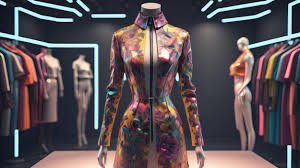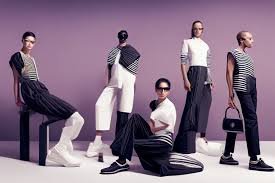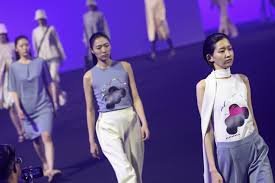Tech-Infused Fashion: How Wearable Technology is Shaping Style in 2024

1. The Intersection of Technology and Fashion
Wearable technology has become an integral part of the fashion landscape in 2024, blending style with functionality to create innovative and interactive garments. This fusion of technology and fashion is transforming how people experience and interact with their clothing, offering new possibilities for both aesthetics and performance.
Smart Clothing: Smart clothing, equipped with embedded sensors and electronic components, is gaining popularity. These garments can track health metrics, adjust to environmental conditions, and even provide real-time feedback to the wearer. Brands like Ralph Lauren and Wearable X are leading the way in developing smart activewear that monitors heart rate, posture, and other physiological data.
Interactive Fabrics: Interactive fabrics are another exciting development in tech-infused fashion. These fabrics can change color, pattern, or texture based on user input or environmental factors. The Fabricant and DressX are at the forefront of this trend, creating garments with dynamic, customizable elements that respond to touch, temperature, or lighting.
2. Innovations in Wearable Technology
Several key innovations are driving the growth of tech-infused fashion in 2024:
Augmented Reality (AR) and Virtual Reality (VR): AR and VR technologies are enhancing the fashion experience by providing virtual try-ons and immersive shopping experiences. Platforms like Zyler and FittingBox are using AR to allow consumers to visualize how garments will look on them before making a purchase, reducing the need for physical try-ons and returns.
Wearable Health Tech: Wearable health tech continues to evolve, offering advanced features for monitoring and managing health. Devices such as smartwatches and fitness trackers are integrating with clothing to provide a comprehensive health monitoring system. Companies like Fitbit and Oura are incorporating advanced sensors into their products, allowing users to track metrics such as sleep quality, stress levels, and physical activity.
Biometric Integration: Biometric integration in fashion is providing personalized experiences based on individual data. For example, garments equipped with biometric sensors can adjust their fit or temperature based on the wearer’s physiological signals. Levi’s and Zegna are exploring biometric integration to enhance comfort and functionality in their collections.
3. The Impact on Fashion and Lifestyle
The integration of technology into fashion is reshaping both style and lifestyle:
Enhanced Functionality: Tech-infused fashion provides enhanced functionality, offering features that go beyond traditional clothing. Wearable tech can improve comfort, convenience, and performance, making it ideal for various applications, from athletic wear to everyday outfits.
Customization and Personalization: Technology allows for greater customization and personalization of garments. Consumers can now select and modify designs, colors, and patterns through digital platforms, creating unique, personalized pieces that reflect their individual style.
Sustainability Benefits: Some tech-infused fashion innovations contribute to sustainability by reducing waste and extending the lifespan of garments. For example, smart fabrics that adjust to environmental conditions can help optimize garment usage, reducing the need for frequent replacements.
4. Challenges and Considerations
Despite the advancements, there are challenges and considerations associated with tech-infused fashion:
Cost and Accessibility: The cost of integrating technology into clothing can be high, making it less accessible to the average consumer. As technology advances and production scales up, prices are expected to decrease, but affordability remains a key challenge.
Privacy and Security: Wearable technology that collects personal data raises concerns about privacy and security. Ensuring that data is protected and used responsibly is crucial for maintaining consumer trust and addressing potential risks.
Durability and Maintenance: The durability and maintenance of tech-infused garments are important considerations. As technology becomes more integrated into clothing, ensuring that garments remain functional and withstand regular wear and tear is essential for long-term usability.
Conclusion
Tech-infused fashion in 2024 represents a dynamic intersection of technology and style, offering innovative and interactive experiences for consumers. From smart clothing and interactive fabrics to augmented reality and wearable health tech, the integration of technology into fashion is transforming the industry. As advancements continue and challenges are addressed, tech-infused fashion promises to shape the future of style and functionality, enhancing both aesthetics and performance in the years to come.







